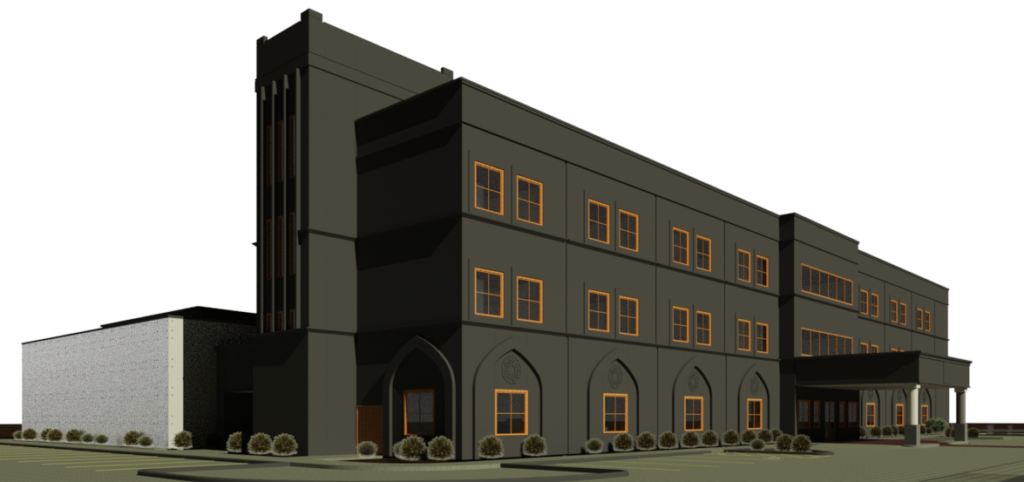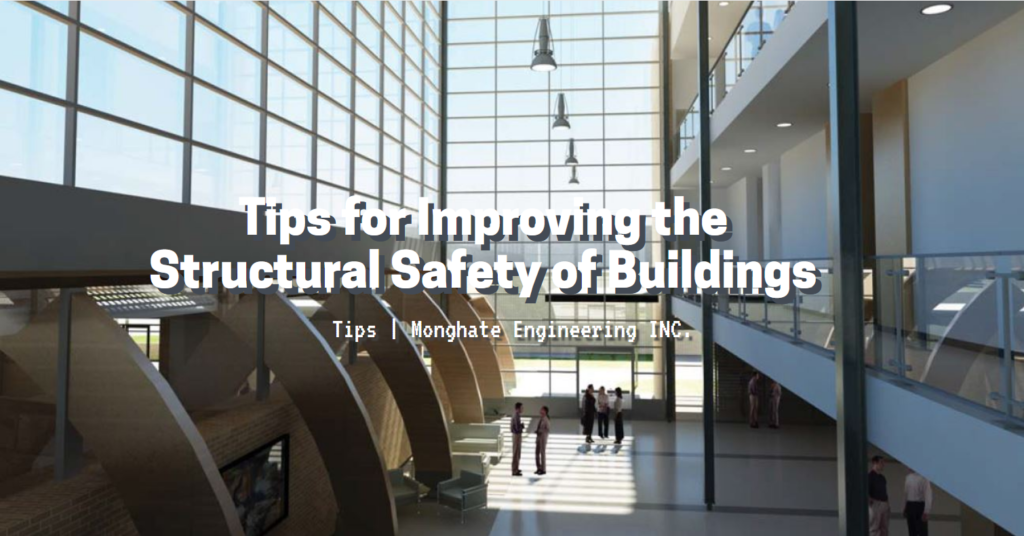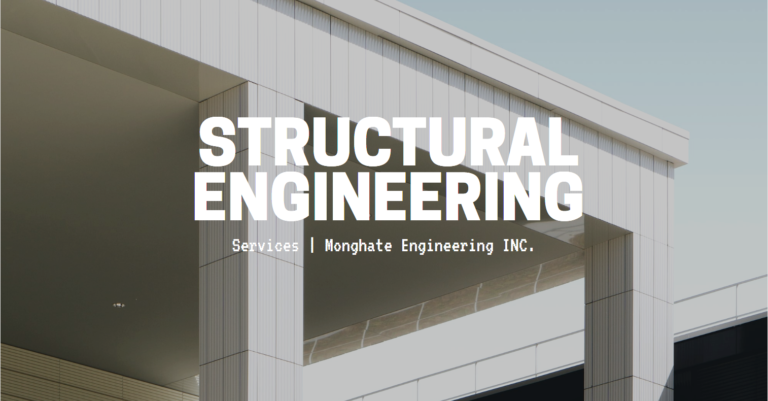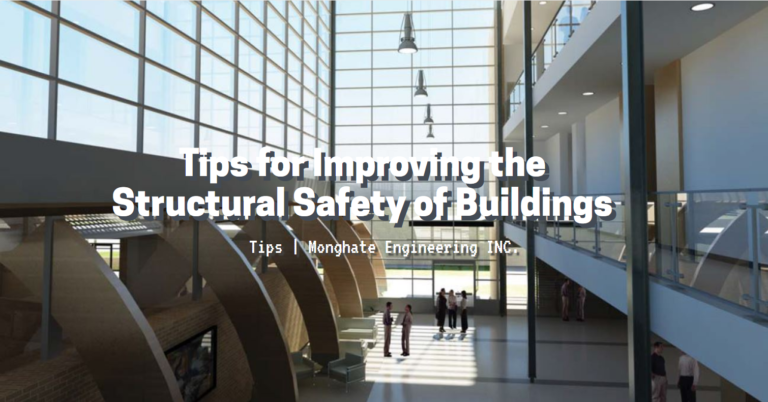Ensuring the safety of a building’s structure is of utmost importance for building owners, occupants, and anyone who interacts with the building. In order to achieve structural safety, there are a variety of measures that can be taken to improve the overall structural integrity of the building. In this article, we will discuss the top 5 ways to improve structural safety in buildings, including both preventative and corrective measures.
Regular Inspections and Maintenance
The first and most important step in improving structural safety in buildings is to conduct regular inspections and maintenance. This includes both routine inspections to identify and address minor issues before they become major problems, as well as more thorough inspections to identify any potential safety hazards or structural deficiencies.
During routine inspections, a qualified structural engineer should review the building’s structural components, such as the foundation, walls, floors, and roof, and look for signs of wear and tear, damage, or other issues. They should also check for any changes in the building’s use or occupancy, which could impact its structural safety.
More thorough inspections may be necessary to assess the building’s overall structural condition, particularly if it is an older building or has undergone significant changes in use or occupancy. These inspections may involve testing or analysis of the building’s structural components, such as load-bearing walls, columns, and beams, and may require the use of specialized equipment or techniques.
Regular maintenance is also critical to maintaining structural safety in buildings. This includes tasks such as repairing or replacing damaged or worn structural components, cleaning and maintaining gutters and downspouts to prevent water damage, and ensuring that the building’s mechanical systems, such as heating and cooling systems, are functioning properly.
Strengthening Structural Components
In some cases, it may be necessary to strengthen or reinforce certain structural components in order to improve the building’s overall structural safety. This may involve adding additional support, such as steel beams or columns, to existing structural members, or reinforcing weak or damaged sections of the building’s foundation or walls.
Strengthening structural components may also involve retrofitting the building with additional structural elements, such as braces or shear walls, to help resist lateral forces, such as wind or earthquakes. This can be particularly important in areas with a high risk of seismic activity or other natural disasters.
The type of strengthening or retrofitting required will depend on the specific structural deficiencies identified during inspections, as well as the building’s age, condition, and use. A qualified structural engineer can assess the building and recommend the most appropriate strengthening measures to improve its structural safety.
Upgrading Building Codes and Standards
Another way to improve structural safety in buildings is to upgrade building codes and standards. Building codes and standards are designed to ensure that buildings are constructed to a certain level of safety and durability, and are updated regularly to reflect advances in construction technology and best practices.
However, not all buildings may be subject to the most current building codes and standards, particularly if they were constructed before the codes were updated. Upgrading to the latest building codes and standards can help ensure that the building meets the highest standards of structural safety, and can also help to future-proof the building against changing building codes and regulations.

Enhancing Fire Safety
While not directly related to structural safety, enhancing fire safety in buildings is also critical to protecting the building’s occupants and preserving the building’s structure. This may involve installing or upgrading fire suppression systems, such as sprinklers or fire alarms, and ensuring that the building’s electrical and mechanical systems are designed to prevent fires.
In addition, buildings with high fire risk should be designed with fire-resistant materials and structural components, such as fire-rated walls and doors, to help prevent the spread of fire and protect the building’s structural integrity.
Ensuring that the building’s occupants are aware of fire safety procedures and have access to appropriate escape routes is also critical. This may involve installing emergency lighting and signage, as well as conducting regular fire drills and training sessions.
Read From Our Blog:
The Importance of Regular Structural Engineering Services for Commercial Buildings
Implementing Seismic Upgrades
Seismic upgrades are another important way to improve the structural safety of buildings, particularly in areas with a high risk of seismic activity. Seismic upgrades involve retrofitting the building’s structural components to better withstand the forces generated by earthquakes and other seismic events.
This may involve adding additional reinforcement to the building’s foundation, walls, and roof, as well as installing seismic dampers or isolators to help absorb and dissipate seismic energy. Seismic upgrades may also involve retrofitting the building’s mechanical and electrical systems to reduce the risk of damage during seismic events.
The type and extent of seismic upgrades required will depend on a variety of factors, including the building’s age, construction materials, and location, as well as the specific seismic hazards in the area.
Conclusion
Improving the structural safety of buildings is critical to protecting the building’s occupants, preserving the building’s structure, and ensuring that the building remains a safe and viable asset for years to come. By conducting regular inspections and maintenance, strengthening structural components, upgrading building codes and standards, enhancing fire safety, and implementing seismic upgrades, building owners and operators can help ensure that their buildings meet the highest standards of structural safety.
It is important to note that these measures are not a one-time fix, but rather an ongoing process of ensuring that the building’s structural integrity is maintained over time. Building owners and operators should work with qualified professionals, such as structural engineers and building code experts, to develop a comprehensive plan for improving the structural safety of their buildings and should prioritize ongoing maintenance and upgrades to ensure that their buildings remain safe and structurally sound.
GET IN TOUCH
Contact Us | LinkedIn | Email


